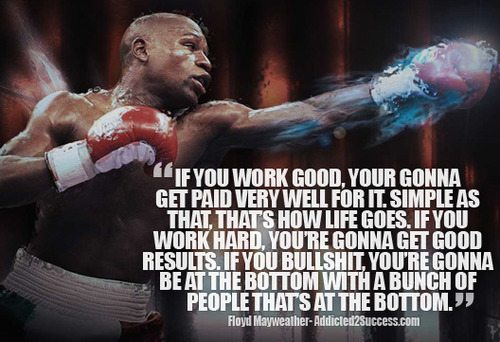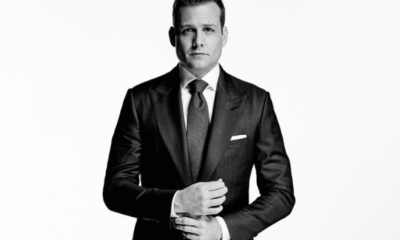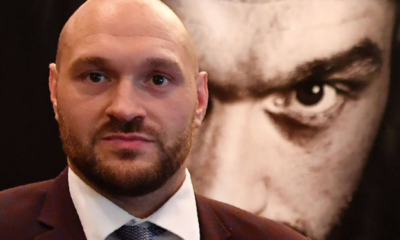Success Advice
7 Success Lessons From Floyd Mayweather
Love him or hate him, there’s no ignoring his success. Both inside and outside the ring.
With his second win over Maidana, he takes his undefeated record to 47-0, and will be remembered as one of history’s pound-for-pound greatest boxers.
And, He’s the highest paid athlete in the world, topping Forbes’ list for the second time. When you see Warren Buffet at his training sessions, you know the man is bigger than just boxing.
Here are 7 success lessons we can learn from Floyd “Money” Mayweather:
1. Ditch The One-Night Stands
Mayweather’s doesn’t put on a show, he puts on a spectacle; he doesn’t do big, he does over-the-top. But it’s not just for one night, he’s done it for over eighteen years.
If you want to be known as spectacular, you need to keep showing up, keep producing, and keep raising the bar. Reputations aren’t built overnight, they’re built over years. Remember, it’s a marathon, not a sprint.
Nobody brags about being a one-hit wonder.
2. Talent is Nothing Without Work
When his daughter was asked what’s the biggest lesson she’s learned being around her father? She responded, “that hard work pays off.”
No doubt Floyd Mayweather has talent, but if he hadn’t worked on that talent from the age of five, there’s no way he’d be the athlete he is.
Many talented boxers walk into his gym, the only ones that get his attention are the ones that survive “dog-house rules,” a gruelling sparring session without any breaks.
Talent without hard work is like an amazing singer—who never sings. Hard work makes the potential, actual.
3. Bigger Than Your Circumstances
Floyd’s father was thrown in prison for dealing cocaine. His mother suffered with drug addiction. At one stage, seven of his family members were sleeping in a one bedroom apartment without any heating or hot water.
According to statistics, Mayweather should’ve ended up in prison. But he chose to be bigger than statistics and bigger than his circumstances.
As the saying goes, “You can lead a horse to water, but you can’t make it drink.” There were a million influences leading him to water, but ultimately he chose not to drink. He chose to hold onto his dream and not be derailed from turning it into reality.
We may not always have power over what happens to us, but we always have power over how we choose to respond.
4. Over-the-Top Self-Belief
Mayweather doesn’t need the question in order to give the answer: “I’m the best ever.”
Cocky? Sure. But actions flow from belief. And whether or not he becomes the greatest is irrelevant if he doesn’t truly believe it. His belief has already taken him to the top with an undefeated record.
As important as it is to have others believe in us, it serves no good if we don’t believe in ourselves.
Our beliefs will shape our reality, a desire for an over-the-top life needs to be matched with over-the-top beliefs.

5. Cutting Your Own Grass
The reason Floyd Mayweather tops Forbes’ list of highest-paid athletes is because he pockets two pay-checks: one as fighter and another as promoter.
Most boxers sign themselves under a promoter. Mayweather is signed to himself: Mayweather Promotions. It’s no doubt more work—taking on the advertising, publicity, and logistics, but the payoffs set him apart.
Success lies in doing more than necessary.
When it comes down to it, nobody will look after your own house like you do; nobody will care as much about your business as yourself. While there’s nothing wrong with outsourcing work, Mayweather shows us the other end—that it can be very profitable to take on the extra work ourselves.
6. Self-Motivated
Alex Ariza, who’s been the strength and conditioning coach for Pacquiao, Chavez, and Maidana, was shocked watching Mayweather train, “It’s the first time i’ve seen anything like it, he doesn’t need anybody to tell him what to do, when to do, how to do, he simply does it, and he does it 100%.
Floyd Mayweather may have world-class trainers, but what sets him apart is the ability to train himself at a world class level.
If you need to be dragged out of your own bed every morning to chase after your dream, success will always be a unicorn for you.
7. Work Hard, Play Hard
While his opponents are sleeping, Mayweather often heads out at midnight for an intense 12-mile run followed with cycling.
He also woke up at 1am to go shoe shopping, and bought 12 pairs.
If anything matches Mayweather’s extreme training, it’s his extreme partying. With private jets, fleets of luxury cars, including a couple of Bugatti Veyrons, and more watches than minutes in a day, extravagance is an understatement.
Those closest to him say that, for an elite athlete, he sure knows how to have fun. It’s not only possible, but necessary—all work no play will make anyone insane. Labouring, without enjoying the fruits of your labour, will lead to burnout.
Floyd Mayweather shows us that sustained success is a balance of discipline and celebration.
Living the dream will be blood, sweat, and tears, but it should also be champagne, hot-tubs, and hotels.
Did You Know
How Skilled Migrants Are Building Successful Careers After Moving Countries
Behind every successful skilled migrant career is a mix of resilience, strategy, and navigating systems built for locals.

Moving to a new country for work is exciting, but it can also be unnerving. Skilled migrants leave behind familiar systems, networks, and support to pursue better job opportunities and a better future for their families. (more…)
Life
10 Research-Backed Steps to Create Real Change This New Year
This New Year could finally be the one where you break old patterns and create real, lasting change.

Every New Year, we make plans and set goals, but often repeat old patterns. (more…)
Change Your Mindset
The Silent Skill That Makes People Respect You Instantly
What truly earns respect and why most people go about it the wrong way

Everybody craves respect but not everyone earns it. Some people believe that a title, years of experience, or a position of authority automatically entitles them to respect. (more…)
Entrepreneurs
The Essential Skills Every Entrepreneur Needs In 2026
Success in the digital age isn’t about luck. It’s about mastering the skills that separate dreamers from doers.

When I was 22 years old, I started my first side hustle as a ghostwriter. (more…)
-

 Business4 weeks ago
Business4 weeks agoWhy Your E-Commerce Fulfilment Is Probably Broken (And How to Fix It)
-

 Shift Your Mindset4 weeks ago
Shift Your Mindset4 weeks ago11 E’s That Define Every Great Leader And Why Most People Miss Them
-

 Did You Know3 weeks ago
Did You Know3 weeks agoThe Success Patterns You Inherited (And Didn’t Notice)
-

 Entrepreneurs2 weeks ago
Entrepreneurs2 weeks agoThe Essential Skills Every Entrepreneur Needs In 2026
-

 Business3 weeks ago
Business3 weeks agoThe Hidden Money Pit in Your Operations (and How to Use It)
-

 Change Your Mindset2 weeks ago
Change Your Mindset2 weeks agoHow to Turn Your Mind Into Your Greatest Asset (Instead of Your Enemy)
-

 Change Your Mindset2 weeks ago
Change Your Mindset2 weeks agoThe Silent Skill That Makes People Respect You Instantly
-

 Life1 week ago
Life1 week ago10 Research-Backed Steps to Create Real Change This New Year

























21 Comments